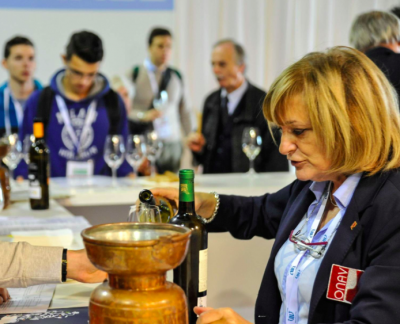Alcoholic beverages, new developments in logistics
Special Simei Drinktec. A high degree of outsourcing (78%) and recourse beyond the media to a "strategic" kind of outsourcing, with development potential, especially in support of international sales support: these are the hallmarks of the relationship between the alcoholic beverage world and third party logistics (a segment worth 231 million euro), the focus of the Contract Logistics Observatory analysis by Milan Polytechnic, presented in Padua

The three segments of the alcoholic beverage sector have peculiar product and production process characteristics. This leads to the diversification of the three segments and the definition of different logistics and distribution choices. For example, with wine, while transport is completely outsourced, the stock is typically managed in house (61% of companies in the sector). With brewers, the direct involvement of specialised cooperatives in the movement of goods prevails (43%) whereas only in the spirits segment is an increased use of logistics operators (80%) observed. “Strategic Outsourcing” relations, typical above all in the spirits segment, usually include the involvement of a logistics service provider in added value activities such as labelling or the creation of kits and activities that go beyond the traditional know-how of an operator.
The characteristics of the sector
The wine sector is composed mainly of local wineries, with wine production and bottling in the local area. For small-sized groups, the warehouse of finished products tends to coincide with the end of the bottling line of the winery; for large groups, however, the centralisation of the stock in one place is common. Storage is mostly on shelves, sometimes with drive-in systems, and the size of the stock is not large. Companies in the sector increasingly feel the need for controlled temperatures for the warehouse and transportation.
Brewing takes place mostly at national level. Typically, the stock is centralised in one or two warehouses and is consistent as is the flow handled. Although the volumes of work are consistent year-over-year, with values that are not high on individual products, sales volumes are strongly seasonal, with more than 60% concentrated between May and September. The business of packaging is very important in this sector.
For spirits, production is located in specific countries, depending on the type of product. Most of the products that are distributed in Italy are imported from abroad, usually through intercompany exchanges. Typically, the stock is centralised in a single national warehouse, in most cases, a bonded warehouse because the products imported are subject to VAT and excise duties in Italy. The high value of the products makes the management of payment processing and credit lines crucial and, like for beer, the management of promotional material is very important too. For products with a higher unit value, there is a tendency to minimise packaging through the introduction of single parcel or piece pickup in the warehouse.
Development of logistics in support of exports
Looking at the wine industry in particular, the share of revenue generated abroad shows significant potential linked to the development of logistics in support of international sales, not yet fully exploited given the prevalence of the Ex-Works sales yield. On average, 63% of revenues of wine producers are aimed at foreign markets. However, the Ex-Works sales yield prevails in large groups too, despite the risk of parallel imports. In this context, an important support to the development of international sales may be provided by some large shipping agencies operating in Italy that are already specialised in international logistics of wine and work on behalf of major foreign importers. These logistics service providers have already developed know-how and skills: through partnerships with various importers, they consolidate the export flows of various Italian producers in Italy and perform shipments to destination on behalf of the importers.
Channels served
While large-scale retail distribution is typically served directly, specialty stores and Horeca are characterised by variegated distribution choices in the three segments. Beer sector companies tend to rely on third parties, wholesalers and distributors, with whom they set up partnerships for the distribution of their products, sometimes on an exclusive basis. Wine companies tend instead to oversee the channels directly, thanks to higher value products that justify the higher distribution costs. In the spirits segment, the situation is half and half: even though the conventional channels and the Ho. Re.Ca. are historically served through wholesalers, we are seeing more and more development from key industry players in the field of direct delivery to trendy bars (the so-called “super Horeca”), with special services such as ” super-fast deliveries” or night deliveries. Another critical issue in managing the Horeca channel, especially if managed directly, is the management of reverse logistics, in particular related to beer kegs.
Writer: Anna Volonterio
To comment you have to register
If you're already registered you can click here to access your account
or click here to create a new account


Comment this news